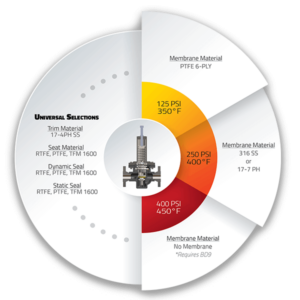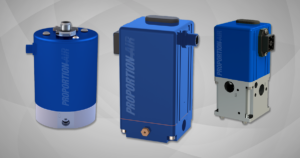What’s a Steam Regulator?
What’s a Steam Regulator?
And why it may be a much better choice than a complicated control valve
My training on controlling temperature using saturated steam did not come from a thermal dynamics or other university course. I learned the basic art of temperature control from very wise engineer customers and since I didn’t come with textbook baggage, it was easy for me to think outside the box, to use a cliché. My engineering mentors taught me well and helped me realize that what we offer for temperature control is quite special. A steam regulator can easily replace steam control valves.
I found that most engineers use complicated control valves to control temperature using saturated steam. They have a thermocouple sending a signal back to a PID controller. The controller is sending a command signal to an electro-pneumatic valve positioner that is controlling how far open and closed the valve needs to be to keep temperature close to the desired range. The consequence of this type of control is the valve must work all the time in an attempt to maintain temperature. Cycling open and closed equates to wear on the valve parts and if one looks at the signal output from the thermocouple, there is a sinusoidal waveform around the targeted temperature, never a smooth, flat signal at temperature.
-The temperature of saturated steam is directly related to the pressure of saturated steam-
If we tightly control the pressure of saturated steam, we will tightly control temperature. Controlling pressure is what a regulator was designed to do and Burling Valve makes very accurate regulators. The first engineers I spoke to about this steam regulator were intrigued. They’d never heard of a steam regulator and this idea just sounded too good to be true. The very first customer I presented this concept to many years ago asked for a trial unit to test performance. We arranged a 30-day trial and the results were praise-worthy. The customer showed me the sine wave of the old system around temperature and showed me the signal output of the thermocouple when using the steam regulator. They were able to carve off 35 minutes of heat up time using our steam regulator and pressure temperature stayed very close to the desired setting with a flat line signal output.
Not only was temperature more tightly controlled, but they also found that the cost of using a steam regulator was less expensive than when using a valve and all the “trimmings.”
If temperature is going to remain the same, the Burling Valve (BS series) spring loaded regulator can be used. Set the adjustment to the desired pressure and the regulator maintains pressure automatically and very accurately.
If temperature has to be adjusted throughout the temperature cycle, like in the first application I mentioned, the Burling Valve (BD series) dome loaded regulator can be teamed up with an electronic pressure regulator from Proportion-Air. The electronic regulator takes the place of the typical I to P (or E to P) transducer and the Proportion-Air pilot device can be calibrated to match whatever pressure is required. A 4-20mA=0 to 250 psig calibrated range is not unusual and neither is 4-20mA=1 to 10 psig. Proportion-Air’s electronic regulator doesn’t require instrument air and only requires a filtration of 40 micron. It also doesn’t constantly bleed air so wasted compressed air is eliminated when using it, and it is a tight shut off device. The electronic regulator doesn’t require regular recalibration like most I to Ps and its repeatability (the measure of achieving the same set point with the same command signal coming from the same direction) is ±0.02% of the full scale calibration.
Steam Regulator
Material Selection Guide

Serviceability is another concern with valves or regulators in a steam system. Burling Valve regulators can be rebuilt while the body remains in the piping. All internals of the regulator are accessible from the top. The diaphragm and soft goods are easy to replace. The regulator has several diaphragm configurations available for saturated steam. The most popular is probably our 6 ply PTFE diaphragm but we also offer metal diaphragms where required.
Users of Burling regulators also find that our Cv values are higher than nearly all other regulators on the market today. Higher Cv values mean that a smaller Burling Valve regulator can be used which can further reduce the cost of installation.
Balanced design, high accuracy, ease of service: these are some of the reasons why companies use the Burling Valve line of steam regulators.
Learn more about steam control valves – The Burling Valve and Proportion-Air way here.
Learn more about Burling Valve here.
Ready to talk to an applications expert about steam regulation? Contact applications.
Originally posted (March 2, 2016) on BurlingValve.com, A Proportion-Air Brand
Author: Larry Brown (Former Sales Manager)

 March Newsletter: Food Processing & Packaging
March Newsletter: Food Processing & Packaging  We’ve got the blues – and it’s a good thing
We’ve got the blues – and it’s a good thing